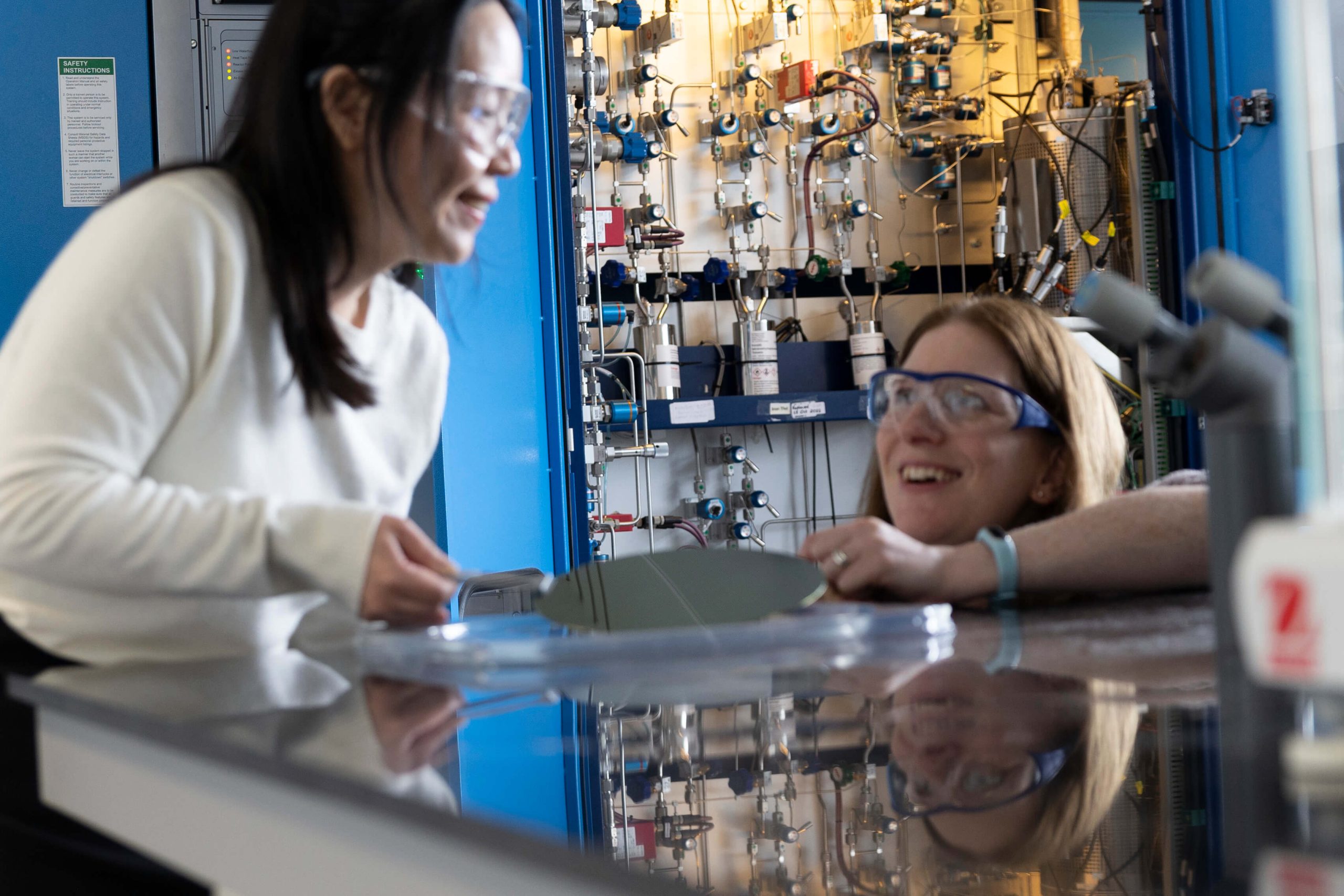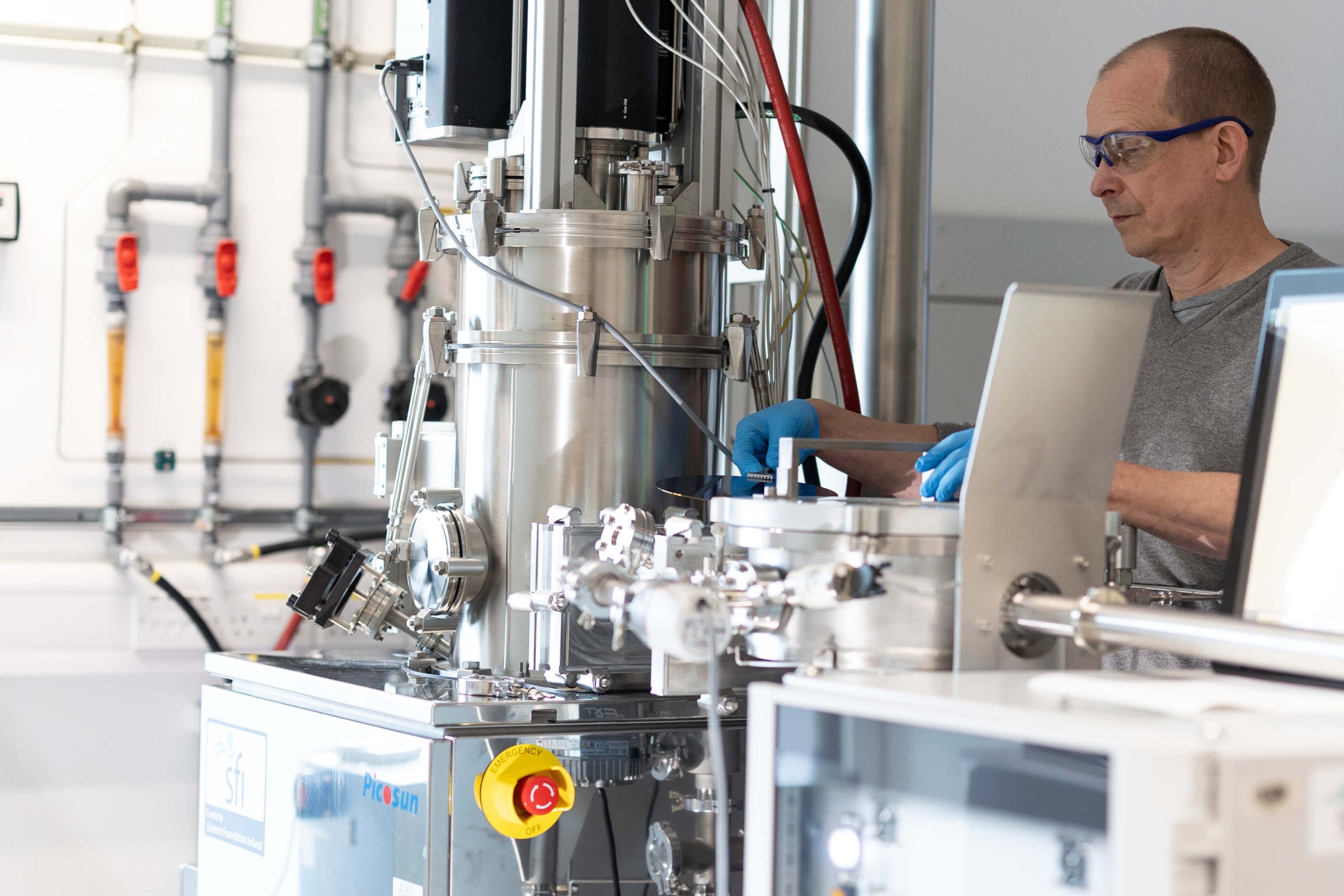
Materials & Devices - CMOS++
The CMOS++ Materials & Devices research programme focuses on materials, emerging devices and architectures for future information processing, interfacing with CMOS and Beyond.
Our vision is to enable deep-tech innovation for next-generation and emerging information-processing technologies.
Our mission is to deliver state-of-the-art solutions for achieving:
- quantum advantage using solid-state platform technologies
- low-power, energy-efficient, high-performance devices and architectures
- increased functionality through novel materials integration.
These will advance the semiconductor industry and contribute to innovations for sustainable information processing applied to, for example, more efficient design of targeted drugs, personalising healthcare, improving logistics to protect natural resources and the environment and managing financial and personal risk.

Research Challenge
In a data and performance-driven world, classical computing is challenged by both the time and energy inefficiency of conventional von Neumann architectures and the end of traditional scaling for integrated circuits built on planar transistors. Future information processing demands scientific and technological shifts including the quantum and neuromorphic computing paradigms and the functional integration of a diverse range of materials and innovative technologies.
Research Focus
The CMOS++ research programme is organised around frontier research in materials modelling and device simulation, atom-scale materials engineering, and materials integration and device processing. These enabling capabilities are applied to:
- engineering of Quantum Technology Platforms
- device architectures for Neuromorphic Computing.
Bringing interdisciplinary expertise from physics, chemistry and materials science to electrical engineering, theoretical modelling and simulation, Tyndall researchers within the team are in a unique position to realise such platforms and engage with industry to accelerate research pathfinding and speed up the translation of early-stage research to technological innovations.
Recent Publications
This publication investigates how the physical and electrical properties of 2D material thin films are affected before and after device fabrication:
E. Coleman, S. Monaghan, F. Gity, G. Mirabelli, R. Duffy, B. Sheehan, S. Balasubramanyam, A.A. Bol, P. Hurley,
“Scrutinizing pre- and post-device fabrication properties of atomic layer deposition WS2 thin films”, Appl. Phys. Lett. 123, 011901 (2023).
This publication is a roadmap for the use of integrated photonics in quantum technologies:
E. Pelucchi, G. Fagas, I. Aharonovich, D. Englund, E. Figueroa, Q. Gong, H. Hannes, J. Liu, C.-Y. Lu, N. Matsuda, J.-W. Pan, F. Schreck, F. Sciarrino, C. Silberhorn, J. Wang and K. D. Jöns, “The potential and global outlook of integrated photonics for quantum technologies”, Nature Reviews Physics, 4, 194 (2022).
Recent Awards
Dr Lynette Keeney was awarded the Irish Research Council Advanced Laureate “Spiral-Top: Designing confined multiferroic topologies to explore relationships between magnetic and polar textures”.
Dr Ray Duffy was awarded by Science Foundation Ireland the Frontiers for the Future Award on “Pulsed laser annealing of low temperature 2D semiconductors for large area applications in electronics using flexible substrates”.
Dr Michael Nolan received an award from the Semiconductor Research Corporation Nanomanufacturing Materials and Processes Program on “Novel thermal atomic layer etching process chemistries”.

